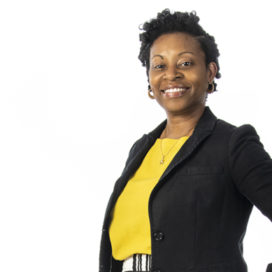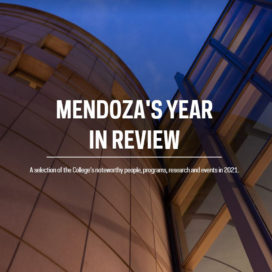Too much microfinance can be a bad thing, expert says
Published: December 1, 2010 / Author: Ed Cohen
One of the lessons of the first 30 years of microfinance is that too much credit is bad for everyone, including poor people, a microfinance expert says.
“Someone once put it that microfinance is like good food,” consultant Gretel Figueroa-Guzmán told a meeting of Notre Dame’s Net Impact MBA Club on Dec. 1, 2010. “The second you get to the table you really want to eat. But then you have a chance to overindulge.”
Figueroa-Guzmán was talking about two recent crises in the microfinance world – one in Nicaragua starting in 2009, the other more recently in India. In both cases, the rapid growth of microfinance institutions and overheated lending practices led to economic turmoil.
Microfinance involves making very small loans – smaller than offered by traditional banks – to poor people, often in developing countries. Their clients are usually household-based entrepreneurs involved in simple ventures such as street vending.
The microfinance movement began in the late-1970s through the efforts of advocates such as Bangladeshi economist Muhammad Yunus, winner of the 2006 Nobel Peace Prize. As of December 2007 there were 3,552 microfinance institutions worldwideserving nearly 155 million borrowers, said Figueroa-Guzmán, formerly a relationship manager for Women’s World Banking, a microfinance network based in New York City.
The consultant, who now lives in Granger, Ind., near South Bend, told the MBA students how microfinance institutions operate and how access to basic financial services – including a safe place to deposit cash – has improved lives in impoverished communities. But crises periodically develop.
Nicaragua, one of the poorest countries in Central America, had the region’s largest number of microfinance institutions in 2009, she said. Lenders there served a combined 450,000 clients and had $400 million in portfolio, she said.
But an influx of charitable aid coupled with explosive growth in micro-lending led to huge numbers of borrowers becoming overly indebted, she said. People refused to pay back loans and began to blockade roads and burn tires in protest. The government supported this popular movement, at one point considering a law to extend repayment terms by 10 years.
“This was with an average loan being $140,” said Figueroa-Guzmán. “It was just getting out of control.”
As default rates skyrocketed, funders of Nicaragua’s micro-lenders pulled out of the country, and many lenders, including the largest, crumbled, she said. Micro-entrepreneurs were left without money to run their businesses.
The situation has finally stabilized and the microfinance sector is recovering slowly, she said.
In the Indian state of Andhra Pradesh, it was a similar situation, but the problem stemmed not just from an influx of donor money but increased access to capital markets. India recently surpassed Bangladesh as the country with the most micro-loans, she said.
Figueroa-Guzmán said one reason micro-borrowers easily become overextended is that credit bureaus don’t exist in developing countries. So loan officers can’t get a clear picture of their applicants’ indebtedness.
Before joining Women’s World Banking, Figueroa-Guzmán worked for two microfinance practitioners: Pro-Mujer in Bolivia, Peru and Nicaragua; and Prodem in Bolivia. She also has worked for the Consultative Group to Assist the Poor (CGAP) at the World Bank in Washington, D.C.
Net Impact is a nonprofit organization for students and professionals interested in using business skills in support of various social and environmental causes. The Notre Dame MBA chapter has about 100 members.
/news_and_events/news_articles/article/8052/too-much-microfinance-can-be-a-bad-thing-expert-says




